Who will rescue the Eurozone rescue fund?
Ralitsa Kovacheva, March 23, 2011
 The EU financial ministers agreed on the creation of a European Stability Mechanism (ESM) to replace the temporary rescue fund for the euro area after 2013. Although certain parameters of the future safety net are clear, important details about its financing and functioning remain to be decided at the European Council at the end of this week.
The EU financial ministers agreed on the creation of a European Stability Mechanism (ESM) to replace the temporary rescue fund for the euro area after 2013. Although certain parameters of the future safety net are clear, important details about its financing and functioning remain to be decided at the European Council at the end of this week.
As it was announced right after the informal eurozone summit on March 11, the future rescue mechanism will have an effective lending capacity of 500 billion euro. Its capital will most likely amount to 700 billion euro, of which 80 billion will be initial installments and the rest 620 billion will be in the form of guarantees. In extreme situations and under the condition that the affected country commits to a correction programme similar to those drafted before the rescue loans negotiated last year, the fund will be able to buy up governmental debt on primary markets.
In order to ensure a gradual transition from the temporary fund (European Financial Stability Facility, EFSF) to the future ESM, the effective lending capacity of the EFSF will be boosted in such a way that the EFSF will also be able to buy up debt at the moment of initial emitting by the euro area countries. Both funds will continue to exist in parallel for a period of time until the EFSF finalises the payments under the existing bail-out schemes, explained Eurogroup head Jean-Claude Juncker and 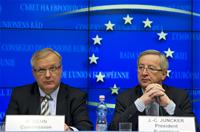 European Commissioner for the Economic and Monetary Affairs Olli Rehn. The bone of contention is how exactly to increase the capital. Obviously, in order to maintain the triple A rating of the EFSF instruments, the six countries with such a rating will have to increase their guarantees or – according to some calculations – even to double them.
European Commissioner for the Economic and Monetary Affairs Olli Rehn. The bone of contention is how exactly to increase the capital. Obviously, in order to maintain the triple A rating of the EFSF instruments, the six countries with such a rating will have to increase their guarantees or – according to some calculations – even to double them.
This time the problem is not Germany, who was previously the keenest opponent of the scheme by reminding that her contribution to the fund is the largest. The difficulties result from heavy inner political pressures in some Member States and from opposition by the Eastern Member States.
On the eve of parliamentary elections, the Finish government is pressed by the right populist parties and by mounting discontent against the rescue actions for Greece and Ireland. At this stage Finland is reluctant to increase its share in the fund.
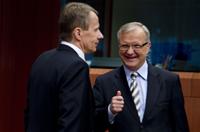 There is strong resistance by Estonia and Slovakia, too. They claim that the current calculation of the installments in the fund makes them to pay more in it than the richest countries in EU. The Brussels-based website EurActiv quoted a diplomat saying that a group of Eastern European countries, among them Estonia, Slovakia, Slovenia, the Czech Republic, Latvia, Lithuania and Bulgaria had said that they would only back a separate deal to put money from sanctions into the ESM if countries could agree on a more "equitable solution to the ESM's capital shares”. EurActiv further adds that in order to satisfy the demands of these countries the ministers have agreed on a 12-years gratis period during which the countries with a GDP lower than EU average will pay less. Moreover, the contributions to the fund will not have an impact on governmental debt.
There is strong resistance by Estonia and Slovakia, too. They claim that the current calculation of the installments in the fund makes them to pay more in it than the richest countries in EU. The Brussels-based website EurActiv quoted a diplomat saying that a group of Eastern European countries, among them Estonia, Slovakia, Slovenia, the Czech Republic, Latvia, Lithuania and Bulgaria had said that they would only back a separate deal to put money from sanctions into the ESM if countries could agree on a more "equitable solution to the ESM's capital shares”. EurActiv further adds that in order to satisfy the demands of these countries the ministers have agreed on a 12-years gratis period during which the countries with a GDP lower than EU average will pay less. Moreover, the contributions to the fund will not have an impact on governmental debt.
A part of the jigsaw puzzle, that is yet to be put together, continues to be the probability for re-negotiation of the conditions of the Irish loan in order to put them in line with those of Greece. This could happen only if Ireland agrees to discuss an increase of its corporate tax. Taoiseach Enda Kenny has to present his country’s position at the European Council.
On top of everything, it is more and more likely that the situation in Portugal to worsen because of political uncertainty. At the beginning of last week, the Moody’s rating agency reduced the credit rating of the long-term governmental bonds with two steps from A1 to A3 negative pointing at the bad forecasts for Portugal’s economic recovery. On the following day, Lisbon traded short-term debt of 1 billion euro at higher interest rates than only a week before.
Official sources from Portugal, quoted by The Financial Times, declared that the country would think of asking for a rescue loan only if the interests exceeded 5%. At this stage, Portugal can still afford to pay more for short-term financing, the authorities in Lisbon believe.
The government there, however, is in an extremely difficult position because the opposition has pledged to set up a boycott against the new cuts proposed by the government and to head toward early elections. The latest budgetary cuts were announced on 11 March, only hours before the informal summit of the Eurogroup, in an attempt to calm the markets and demonstrate before the Member States that Portugal is able to manage the situation.
The austerity package is scheduled for a vote on Wednesday. The socialist government of Jose Socrates has no majority and if the opposition unites against him, the worst scenario will happen. For the time being, Brussels institutions refuse to comment on whether they are concerned about a possible change of Portugal government and rejection of the latest austerity package.
At the same time, because of rising inflation in the eurozone, the President of the European Central bank, Jean-Claude Trichet, seems inclined to increase the basic interest rate, which since 2009 is at a record-low level of 1%. This will pose serious difficulties before the so called peripheral economies in the euro area that suffer from heavy debts, a vulnerable bank sector and low (or zero) growth.
The outcome of this entanglement is expected at the end of the week, when the  EU heads will gather in Brussels. Until then, the fate of Portugal's government will be known. It is certain that a possible political crisis will increase the market pressure over Portugal and that a crisis there will imminently reflect in Spain. Lisbon will probably be pushed by its Eurogroup partners to ask for assistance as they did with Ireland. This perspective reveals an even stronger need for all the decisions regarding the current and the future rescue fund to be taken without delay. The question is what kind of compromise will be made, who will pay and what would be the price.
EU heads will gather in Brussels. Until then, the fate of Portugal's government will be known. It is certain that a possible political crisis will increase the market pressure over Portugal and that a crisis there will imminently reflect in Spain. Lisbon will probably be pushed by its Eurogroup partners to ask for assistance as they did with Ireland. This perspective reveals an even stronger need for all the decisions regarding the current and the future rescue fund to be taken without delay. The question is what kind of compromise will be made, who will pay and what would be the price.
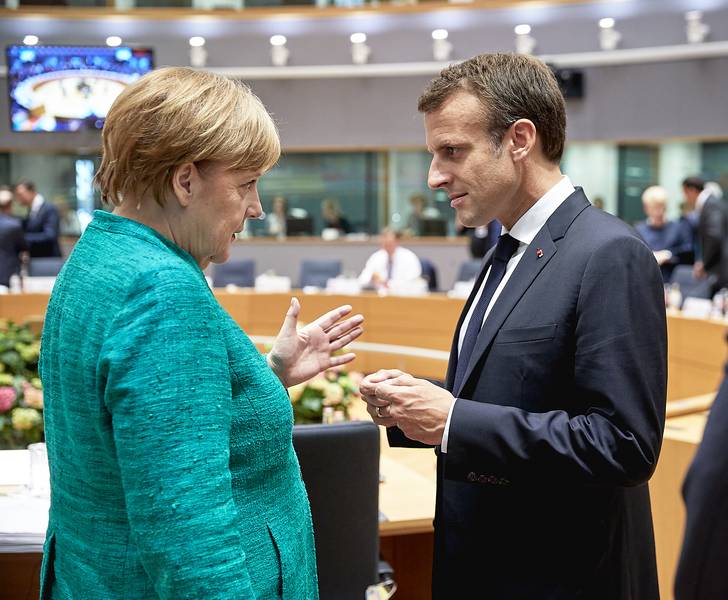 Angela Merkel, Emmanuel Macron | © Council of the EU
Angela Merkel, Emmanuel Macron | © Council of the EU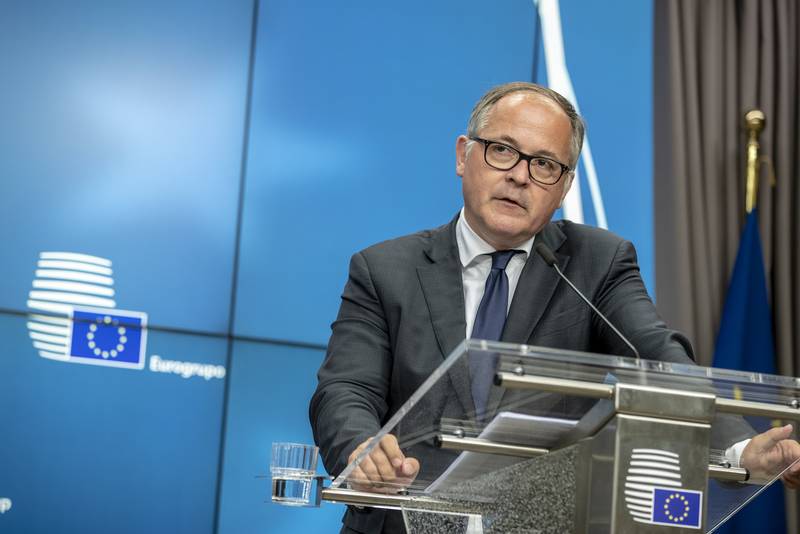 Benoit Coeure | © Council of the EU
Benoit Coeure | © Council of the EU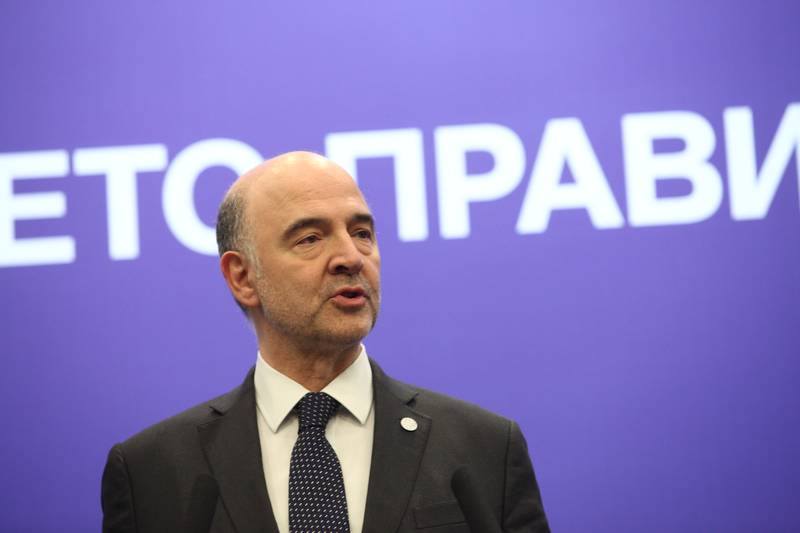 Pierre Moscovici | © Council of the EU
Pierre Moscovici | © Council of the EU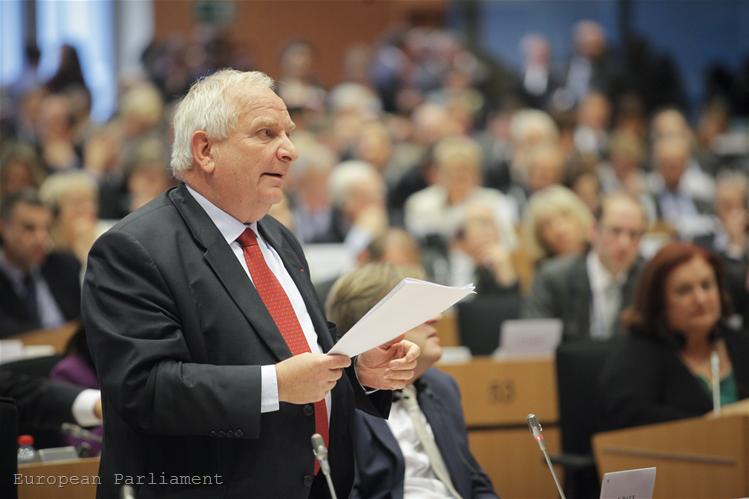 | © European Parliament
| © European Parliament | © The Council of the European Union
| © The Council of the European Union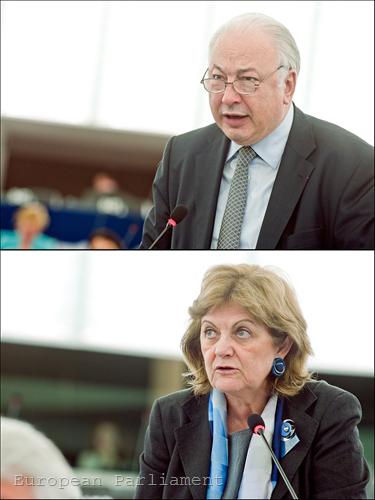 | © European Parliament
| © European Parliament